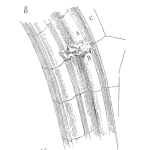
Learn what you need to know and do to quickly have world class maintenance and reliability excellence in your operation
In 2002 I wrote a small book after visiting Sumitomo Chemicals in Japan called the Japanese Path to Maintenance and Reliability Excellence. It explained the maintenance and reliability philosophy and attitudes that got Sumitomo Chemicals amazingly high chemical process plant uptime.
That visit totally changed my thinking about the role of maintenance in delivering high equipment reliability. The most profound realisation was that preventive and predictive maintenance can never deliver reliable plant and equipment. You do maintenance because a machine is unreliable. When a machine is reliable it does not need maintenance.
Since then my focus has been on what must be done to plant and equipment so that it does not need maintenance. With that change of mindset new discoveries and answers started finding me.
At a course run by retired Professor of Reliability and Maintenance, David Sherwin, he introduced the ROCOF curve for machines. ROCOF is Rate of OCcurrence Of Failure, which is the instantaneous frequency at which a machine fails.
ROCOF is the sum of the instantaneous failure rates of a machine’s working parts. First a working part has to fail before a machine stops—no part failure, no machine stoppage. That was an ‘aha moment’ of understanding for me.
ROCOF explained how you get high machine reliability—stop working parts failure. To prevent a machine parts failing you must remove all causes of their failure.
I began to look at what needed to be done to create high equipment reliability. I re-discovered the metal fatigue graph below from my mechanical engineering university days. Thirty years ago at it was meaningless. Now it was enlightenment for me. The fatigue curves explained exactly how to get reliability from all machinery.
At high stresses, up near the ultimate stress, metal structures fail in just a few cycles. At low stresses steels never fail and other metals fail only after many cycles. The difference in lifetimes between failures can be 100 times, and even greater. The curves that 30 years ago were interesting pictures in a book suddenly made it clear to me how you get higher and higher machine reliability.
A machine part only breaks if it is overstressed because there is not enough material to take the load. Once the imposed load is too great for the material structure supporting it the structure fails.
Minimising stress in a part means reducing any and every stress that impacts the material structure. The atomic matrix in the materials of machine parts can be destroyed by numerous forms of stress and degradation. High atomic stress can occur by sudden localised overload, localised cyclic loading causing material fatigue, frame distortion, temperature expansion or contraction, shaft misalignment, etc. Degradation can be from erosion, corrosion, chemical reaction, melting, high electrical current, etc. Once the material structure cannot take an imposed stress it collapses and the part fails.
Equipment reliability is malleable by choice of policy and practice.
Professor Sherwin passed on another piece of fundamental advice, “Equipment reliability is malleable by choice of policy and practice.” You can choose what level of reliability you want. To have high reliability you only need to ensure the parts in your machines live safely, i.e. they are risk-free of failure, for a long time. You do that by keeping them at minimal atomic stress through controlling the causes of material structure loads.
To minimise stress in a working part it is necessary to find ways to keep the material’s atomic structure from being overloaded. It means controlling what causes atomic stress and material degradation throughout the operating life. Stress reduction needs suitable materials selection, proper alignment of loads and forces passing through the atomic structure, and operating degradation management. Materials selection is an engineering decision, force alignment is a matter of parts design and precision installation, and operational degradation depends on what touches a material during its working life.
Machines use force to work and generate forces when they work. It is impossible to have stress-free working parts except in a machine that is not working. It means that eventually all machines will fail because their parts do suffer stress in operation. But how long a working part lasts between failures can be controlled by how we load and stress that part during its operating life—hence, “equipment reliability is malleable by choice of policy and practice”.
Our choices of material, our choices of loading and the control we impose on material structure degradation influence reliability. The Professor is right; our choices, or lack of them, put us in-control or out-of-control of our equipment’s reliability.
You too have now found the only true way to create reliability—remove the causes of stress in the material structure of your machinery’s working parts.
Equipment reliability is all about managing and minimising atomic stress in materials-of-construction. If a part’s structure does not fail the equipment does not stop, nor does it need corrective maintenance. From this new realisation of how to create plant and equipment reliability the Plant and Equipment Wellness Way was born.
How quickly you move to control what happens at the atomic level of your parts during their life dictates how fast it will be before you become a high reliability organisation. If you leave your equipment parts at risk of atomic structure failure then chance and misfortune ensure you will suffer unreliability.
The only path to outstanding machinery reliability is by doing those life cycle activities that remove the chance of a machine’s parts atomic structure being failed when in use. Nothing else matters; nothing else works.
My best regards to you,
Mike Sondalini
Managing Director
Lifetime Reliability Solutions

Leave a Reply